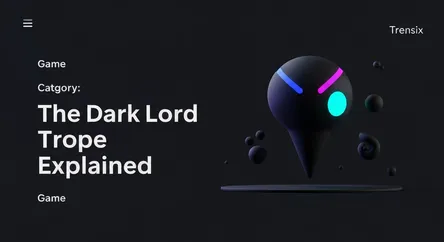Game
The Dark Lord Trope Explained

Explore the 'Dark Lord' archetype, the ultimate evil antagonist in many fantasy games. Learn why this powerful villain remains a popular gaming trope.
What is it?
The Dark Lord is a classic antagonist archetype in fantasy lore, representing the ultimate source of evil in a story. Typically a powerful, quasi-divine being, often a fallen hero or sorcerer, the Dark Lord seeks to conquer or corrupt the world. They command vast armies of monstrous minions from a dark fortress and often wield immense magical power. Popularized by characters like Sauron from The Lord of the Rings, this trope is a cornerstone of video game narratives, serving as the primary antagonist and final boss in series like Diablo, The Legend of Zelda (Ganon/Ganondorf), and countless other RPGs.
Why is it trending?
The Dark Lord trope provides a clear and compelling conflict. It establishes high stakes immediately, giving the player a singular, unambiguous evil to overcome. This simplicity is effective for epic storytelling, creating a classic good-versus-evil narrative that is easy for players to invest in. Modern games often explore or subvert this trope, adding depth to the villain's motivations, but the core appeal of a powerful, world-threatening foe remains a reliable foundation for engaging fantasy adventures that promise an epic final confrontation.
How does it affect people?
For players, the Dark Lord serves as the ultimate challenge, the final test of their skills and determination. Defeating such an immense evil provides a powerful sense of accomplishment and catharsis. This archetype shapes the player's journey, defining them as the prophesied hero destined to save the world. The presence of a Dark Lord elevates the narrative, transforming a simple game into an epic saga. It creates memorable villains and frames the entire gameplay experience around a heroic quest to bring light back to a world threatened by overwhelming darkness.